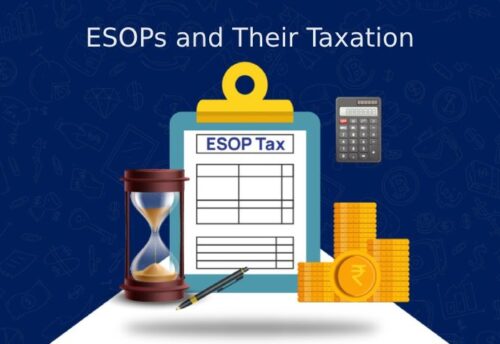
- 06/10/2024
- MyFinanceGyan
- 127 Views
- 4 Likes
- Cryptocurrency, Investment
What is Blockchain Transactions & How Does it Work?
In the ever-evolving world of digital finance and decentralized systems, the concept of blockchain has emerged as a groundbreaking technology. Its core function lies in enabling secure, transparent, and immutable transactions. But what exactly is a blockchain transaction? How does it work? And why has it become such a vital part of modern-day digital infrastructure? In this comprehensive guide, we’ll dive deep into the workings of blockchain transactions, demystifying the processes behind them and exploring the various types of blockchains that drive this technology.
With blockchain’s growing influence across industries—ranging from finance to healthcare, and even entertainment—understanding how blockchain transactions function is critical. In this blog, we’ll explore blockchain transactions explained in a detailed yet approachable manner. From the process behind these transactions to understanding how you can track them; we’ll cover it all.
What is a Blockchain Transaction?
At its core, a blockchain transaction is a digital operation that moves data or assets from one party to another over a blockchain network. This type of transaction is different from traditional financial systems because it doesn’t rely on intermediaries like banks or financial institutions. Instead, it leverages decentralized networks and cryptographic techniques to ensure the transaction is secure, transparent, and immutable. Once a transaction is recorded on a blockchain, it becomes a permanent part of the blockchain’s history and cannot be altered.
Blockchain transactions operate through a system of “blocks,” each of which contains a bundle of transactions. These blocks are linked in a chain-like structure, giving the technology its name—blockchain. Transactions in blockchain are verified by a network of nodes (computers) that work together to validate each transaction through a consensus mechanism like Proof of Work (PoW) or Proof of Stake (PoS). This decentralized verification process makes blockchain transactions highly secure and resistant to fraud.
When we talk about blockchain transactions explained in simple terms, think of them as secure, peer-to-peer exchanges that are publicly recorded on a distributed ledger. This means that anyone can verify the transaction’s legitimacy, but no one can alter its details once it is confirmed.
The process behind blockchain transactions can seem complex at first, but it becomes easier to grasp once broken down step-by-step. Understanding the blockchain transaction process is crucial to getting the full picture of how this technology functions.
- Initiation: The blockchain transaction begins when a user wants to send data or assets (such as cryptos) from one address (their own) to another address on the blockchain. This request is usually made through a wallet, which is software that allows users to interact with the blockchain.
- Verification: Once the transaction is initiated, it needs to be verified. Instead of a bank or third-party institution verifying the transaction, this process is handled by the network’s nodes. These nodes check whether the sender has enough assets to complete the transaction and whether the transaction follows the blockchain’s rules.
- Consensus: In a decentralized network, transactions must go through a consensus mechanism where the network nodes collectively agree that the transaction is legitimate. Different blockchains use different consensus models such as Proof of Work (used by Bitcoin) or Proof of Stake (used by Ethereum 2.0). In Proof of Work, miners solve complex cryptographic puzzles to validate transactions, while in Proof of Stake, validators are chosen based on the amount of crypto they hold.
- Inclusion in a Block: Once validated, the transaction is bundled together with other transactions into a “block.” This block is then added to the blockchain, creating an immutable record. Each block is linked to the previous one, ensuring transparency and security in the blockchain transactions process.
- Confirmation: After being added to the blockchain, the transaction is considered confirmed. The number of confirmations varies depending on the blockchain, but more confirmations generally mean greater security. For instance, in Bitcoin, a transaction is usually considered final after six confirmations.
- Completion: Finally, once confirmed, the recipient receives the assets or data, and the transaction becomes a part of the permanent blockchain transactions history. It’s important to note that the entire process is decentralized, transparent, and highly secure, thanks to the cryptographic techniques that blockchain employs.
What Are the 4 Types of Blockchain?
Blockchain technology has evolved to cater to different needs and industries, and as a result, various types of blockchains have emerged. Understanding the four types of blockchain can help you grasp the versatility of this technology. Each type serves a different purpose, yet all follow the core principles of decentralized networks, transparency, and security.
- Public Blockchains: Public blockchains are fully decentralized and open to anyone. Anyone with internet access can participate in the blockchain’s activities, such as validating transactions or participating in the consensus process. Bitcoin and Ethereum are prime examples of public blockchains. These are often referred to as the most secure types of blockchains because their open nature means that a larger number of participants are working together to verify transactions. Blockchain transactions on public blockchains are transparent and available for anyone to view, adding another layer of trust.
- Private Blockchains: Private blockchains, on the other hand, are restricted and controlled by a single organization. Only approved participants can join the network, which allows for more control and faster processing times. This type of blockchain is typically used for enterprise solutions, where businesses want the benefits of blockchain technology but need to control who can participate. Transactions in blockchain within private networks are usually not visible to the public, but the underlying technology is still secure and tamper-proof.
- Consortium Blockchains: Consortium blockchains are a hybrid between public and private blockchains. In this type, multiple organizations come together to govern the blockchain, sharing responsibilities for managing the network. This allows for more trust and decentralization than a private blockchain but with more control than a public blockchain. Industries like finance, supply chain, and healthcare often use consortium blockchains for better coordination and data-sharing among multiple entities.
- Hybrid Blockchains: Hybrid blockchains combine the features of both public and private blockchains. They allow for a more customizable blockchain experience where certain data can be public, while other information remains private. This is particularly useful in industries where sensitive data must be kept confidential, but there’s still a need for public verification of certain transactions. Blockchain transaction history in hybrid blockchains can be designed to allow only specific parties access to transaction details.
How Can I See Blockchain Transactions?
One of the key features of blockchain technology is its transparency, allowing anyone to view and verify blockchain transaction history through blockchain explorers. Blockchain explorers are tools that give users access to the details of any transaction that has occurred on the blockchain. Whether you’re using a public blockchain like Bitcoin or a private blockchain, these explorers provide an easy way to view the transaction process in real time.
Step-by-Step Guide to Viewing Blockchain Transactions
- Choose a Blockchain Explorer: To view blockchain transactions, you need to use a blockchain explorer. Popular explorers include Etherscan for Ethereum and Blockchain.info for Bitcoin. Simply search for the relevant blockchain explorer online.
- Enter the Transaction ID: Each blockchain transaction has a unique transaction ID (also called a hash), which can be entered into the search bar of the blockchain explorer.
- View Transaction Details: Once you enter the transaction ID, the explorer will display key details, such as the number of confirmations, the amount sent, the sender and receiver’s wallet addresses, and the exact time of the transaction.
- Monitor Transaction Status: Blockchain explorers also allow users to monitor the status of a transaction. This is particularly useful when sending cryptos, as it lets you verify if your transaction has been confirmed or is still pending.
Being able to view transactions in blockchain is a game-changer in terms of transparency, as it allows anyone to verify the authenticity of a transaction without needing to trust a third-party institution.
Conclusion:
Blockchain technology is revolutionizing the way we conduct transactions by offering a secure, transparent, and decentralized method of transferring assets and data. By understanding blockchain transactions explained in this article, you can appreciate the transformative potential of blockchain across various industries. From public blockchains to private and hybrid models, each type of blockchain serves a unique purpose, allowing businesses and individuals to leverage the benefits of decentralized systems.
Whether you’re an enthusiast or someone simply looking to understand how blockchain transactions work, it’s clear that blockchain’s impact is far-reaching. As the technology continues to evolve, it’s likely that blockchain will become even more integral to our financial systems, supply chains, and daily lives. By embracing and understanding the blockchain transactions process, you can stay ahead of the curve in this rapidly advancing field.
Start Investing in the Cryptocurrencies, Open a Free Account on CoinDCX: https://join.coindcx.com/invite/n75xR
Please note,
The views in the article/blog are personal and that of the author. The idea is to create awareness and for educational purpose and not intended to provide any product recommendations.



